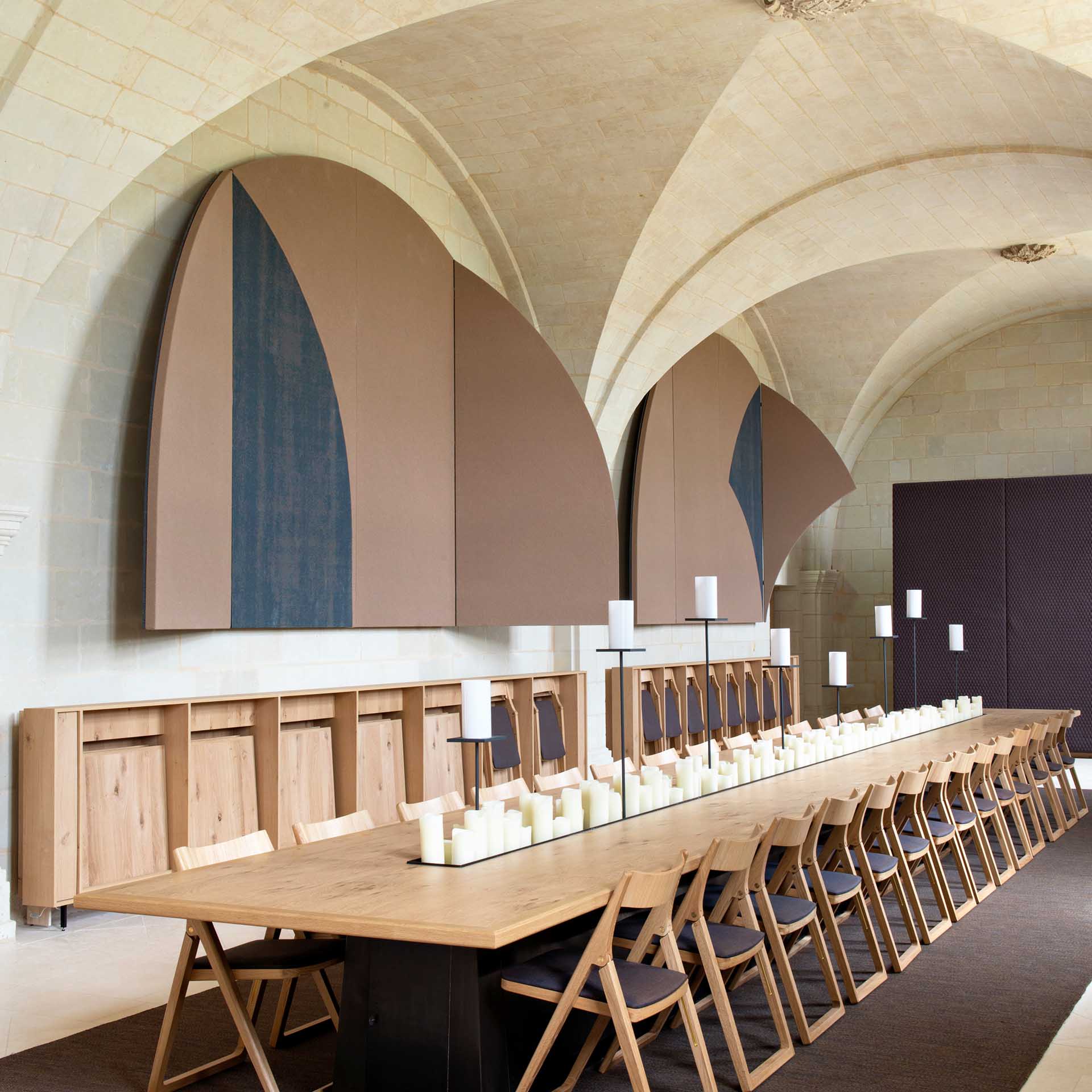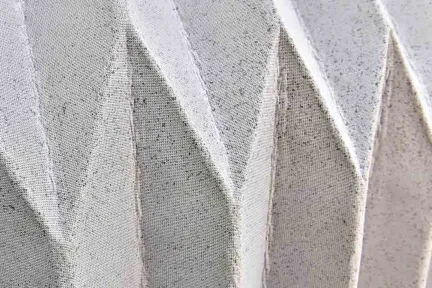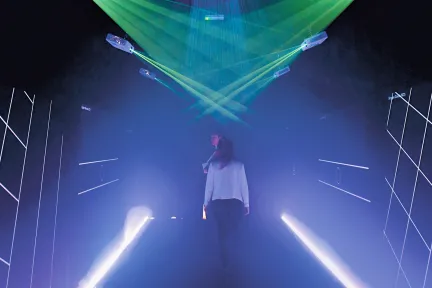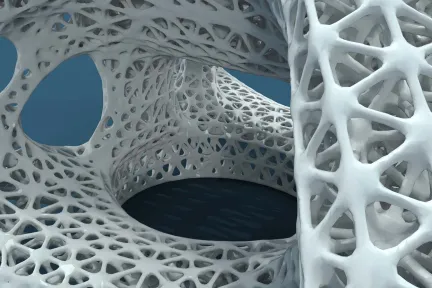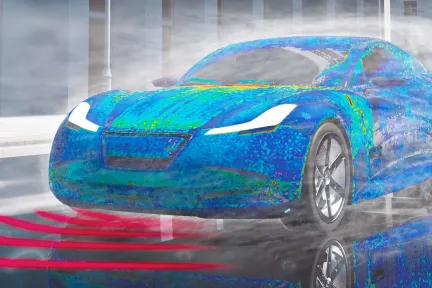Sustainable design: traditional is the new modern
Some designers are exploiting the possibilities offered by virtual technology. Could data be a material that is just as authentic as wood, linen or leather?
In their quest for more sustainable ways of doing things, some designers are reconnecting with secular traditions while exploiting the vast possibilities offered by simulation and virtual technology.
Design is a discipline that is now aiming to achieve greater sustainability. How do you factor this into your work?
Our design work on the interior of the Abbaye de Fontevraud is a good illustration, I think. This abbey is one of Europe’s largest monastery complexes, built in the 12th century in the Loire Valley region of France and consisting of four separate monasteries. It became a hospital, then a prison, and is now a cultural center and hotel. You can feel a sense of history in each stone, and our work obviously needed to take that into account. We gave new uses to the various parts of the complex – for example, the chapel is now a bar – and responded creatively to its constraints, using the energy of the place and its special ambience.
The walls are made of solid stone, which gets very cold in winter, and when you talk there’s an echo. So we hung large pieces of fabric to provide sound insulation and block the echoes, and we installed underfloor heating. The floor was virtually the only thing we could touch in this architectural jewel. There is also a system of table-top heaters that provide warmth to people up close, like the fireboxes used centuries ago.
Designers are increasingly making use of short distribution channels; what is your approach in this area?
We decided to work with tradespeople living within 50 kilometers (31 miles) of the abbey. For example, we were originally planning to buy the same tableware used in the hotel, but one day while traveling to the abbey.
I saw a potter’s sign, so the restaurant manager and I went to see him. We talked to the potter, got to know each other, and we explained to him the type of cuisine that the restaurant would be offering and how the dishes would be prepared.
So, just like in the time of the monks, the tableware will be shaped, turned, fired and colored almost on site, and I’m very happy about that because the potter is an exceptional colorist. Short distribution channels are good for the carbon footprint, but also being integrated into the local economy is very beneficial from the social point of view.
Factoring environmental and social concerns into my practice fuels my creativity.
Has sustainability changed the way you work?
My style is often described as strippedback, and my work combines traditional and modern elements, using authentic materials like leather, wood and linen. I definitely like natural objects and my style is a serious one. But around 10 years ago, as an interior designer, I was focused on the creative aspect of the work: environmental issues were not a central concern and the way I worked was very different. I’m now thinking more about how I do things and adopting new attitudes. I think that’s giving my work a new dimension that’s fueling my creativity and my approach to the various components of each project.
Previously, I may not have gone to visit that potter; I would have done my design work and sent my plans to various people, who would have turned them into tangible objects. It’s worth highlighting that, for centuries, the abbey was at the heart of the region’s economy, and it fostered a whole ecosystem of agricultural and craft activities. All that had disappeared, so in some ways I’m reconnecting with that history.
How do you recreate that link with the surrounding area?
The soap we use in the hotel is made locally. The beds and all the linen and fabrics we use come from factories in the region. It wasn’t easy to achieve, but I’m convinced that it gives an extra dimension to the project, giving it greater meaning and depth. That’s because Fontevraud is also a gathering place, a space for dreams and contemplation, not just from a Christian point of view as it was for centuries, but in a more universal, humanistic way.
In France, as in Italy, we are fortunate to have such an exceptional architectural heritage. It’s vital that we find new purposes for these buildings, which could fall into ruin in a century or two if we do nothing. The question is how to manage the transformation and ensure that we preserve that heritage while adapting buildings to new uses. This is clearly what we’re trying to do.
Patrick Jouin
Patrick Jouin is a French designer. His creations often feature a minimalist style, combining the traditional and the modern. His design work encompasses objects, interiors and staging. His works feature in the collections of MoMA and the Pompidou Center, and he designs prestigious spaces all over the world.
